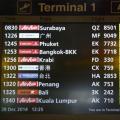To understand the role of each mode of transport, it is useful to compare their income and traffic volumes. The corresponding data characterizing commercial transportation is shown in Figures 10.2 and 10.3. Ton-mile is a standard indicator of cargo turnover, containing information on both the volume of cargo flows (in tons) and the distance of transportation (in miles). The value of this indicator is obtained by multiplying the weight of the cargo on each flight by the length of the route. The figures show traffic growth in each mode and the relative growth in air and road revenues per ton-mile.
Railway network. Historically, the bulk of freight traffic in the continental United States was carried by rail. An extensive network of railroads appeared early in the United States, connecting almost all the cities and towns of the country; This explains the fact that until the end of the Second World War, railroads were ahead of other modes of transport in terms of ton-miles of intercity freight transportation. The reason lies in the fact that railways provided economical transportation of large goods, while offering a range of additional services, thanks to which they took an almost monopoly position in the transport market. However, after the war, rapid development of road transport began, which became a serious competitor to railways, and the relative share of the latter in total transport income and total freight turnover began to decline.
In 1990, railroads accounted for 37.4% of all intercity freight traffic measured in ton miles. According to forecasts, this type of transport should enter the 2000s with approximately the same market share. This stabilization of relative market share represents a significant improvement over the 1947-1970 situation, when rail transport was in severe decline: in 1947, the railroad share of ton-miles of total freight traffic was 54.0%, while in 1958 it was 54.0%. already 39.2%, in 1980 - 36.4 and in 1992 - 37.0%. The decline in income is even more dramatic: from almost 40% in 1950 to 20.9% in 1982.
Railroads once constituted the longest transportation network in the United States, but they were replaced by highways, the construction of which expanded widely after the Second World War. In 1982, the country's railroad mileage was 165,000 miles, but by 1989 it had dropped to 148,000 miles as a result of the liberalization of railroad abandonment rules following the passage of the Staggers Rail Act.
The importance of railways is still determined by their ability to transport large volumes of goods efficiently and relatively cheaply. long distances. Rail transportation has high fixed costs due to the high cost of rail tracks, rolling stock, marshalling yards and depots. Wherein variable part Operating costs on railways are low. The transition from steam locomotives to diesel locomotives has reduced variable costs per mile of track, and the introduction of electric locomotives is associated with even greater cost savings. New agreements with trade unions made it possible to reduce the number of employees, which led to further reductions in variable costs.
Relatively recently, a tendency towards specialization of railway transportation has emerged. The main part of the freight turnover is provided by the railways with the export of mineral raw materials (coal, ore, etc.) from mining sources located far from waterways. The ratio of fixed and variable costs in railway transport is such that long-distance transportation is still profitable for it.
Over the past 50 years, US railroads have partially lost their market position to road, water and other types of freight transport. To counter this trend, some railroad companies, such as Union Pacific (UP), have undertaken a number of initiatives aimed at simplifying management, improving operations, improving service quality, and reducing costs. UP, the second-largest U.S. railroad, began a turnaround in 1987 with the introduction of total quality management programs designed to provide greater customer satisfaction, efficient use of resources, improved profitability, and increased growth.
Company's absorptive capacity advanced technologies brought her success. An example would be the consolidation of 160 regional customer service divisions into a single national center consumer services, located in St. Louis. This center daily processes 20 thousand requests of a wide variety of profiles - from placing orders to requests for the passage of cargo.
Another example of the company's innovations is the establishment of a new centralized dispatch center in Omaha. Housed in 100-year-old warehouses, the center is equipped with the latest technology and integrates the operations of ten regional control centers. On each wall of the control center, along the same length football field, a number of video screens have been reinforced, which allow you to monitor all stages of work carried out in the area controlled by the dispatcher. Bright colorful displays provide information about the condition of trains and railway tracks, the cargo being transported and the location of repair teams. Computers and mobile phones are used for communication between trains and the dispatch center. The dispatch center maintains direct communication with each driver, which allows the center's employees to constantly be aware of all matters and carry out operational management of transportation.
Automobile transport
Air Transport
Railway transport
Pipeline - designed for transportation of liquid and gaseous products from production sites. The created network is being used in Russia. This pipeline network makes it possible, along with domestic supplies, to export oil to the countries of Central and Western Europe in transit through Belarus and Ukraine. More than 95% of produced oil moves through pipelines.
Advantages:
– pipes can be laid of any diameter, in a direct direction from the place of production to the place of consumption;
– the lowest cost of transportation;
– minimal cargo loss during transportation.
Flaws:
– transports only the liquid or gaseous state of the cargo.
up
Sea transport - serves external government transportation. Over the past ten years, the share of participation of Russian vessels in foreign trade transportation has fallen from 80% to 12%. The volume of domestic transportation is insignificant.
Advantages:
– high load capacity;
– transportation range;
– low cost.
Flaws:
– seasonality of transportation;
– functions only between ports;
– low delivery speed.
up
River - one of the most available types transport. Serves long-distance and local transportation, the routes of which coincide with the movement of rivers and canals. Has high carrying capacity. Transportation of bulk cargo. They are much cheaper than by rail.
Advantages:
– natural paths: no capital costs for construction and development;
– low cost of transportation over long distances;
– low resistance to movement.
Flaws:
– seasonality of work;
– low delivery speed;
- tortuosity of paths.
up
Automotive - one of the most common, acts both as an independent and as an auxiliary transport. For short-haul transportation, road transport is the most economical, due to significantly lower costs for initial and final operations compared to rail transport.
Advantages:
– greater maneuverability, thanks to which the cargo can be delivered from the place of loading by the sender to the recipient’s warehouse;
– delivery speed;
– effective when transporting passengers.
Flaws:
– high cost;
– low load capacity.
up
Air - this is the fastest mode of transport, providing non-stop flights over long distances at speeds of 1000 km/h and above. Mainly used for passenger transportation, in addition, for transportation of furs, live fish, flowers, etc.
Advantages:
– the ability to quickly organize regular communications between any regions of the country;
– the shortest distances, shorter than the corresponding routes by railways by 25-30%, by sea and river by 50%;
– requires less specific capital investment.
Flaws:
– depends on meteorological conditions;
– significant fuel consumption;
– high cost of transportation.
up
Railway transport
- this type of transport is most suitable for mass transportation, operates day and night, regardless of the time of year and atmospheric conditions. Railways bring life to hard-to-reach areas and help develop natural resources our Motherland.
Advantages:
– high carrying capacity;
– ability to handle massive flows of cargo and passengers;
– relatively low cost of transportation;
– high speed of delivery;
– greater flexibility and maneuverability during transportation;
– a universal mode of transport for all cargo.
Flaws:
– requires large capital investments, depending on topographical, climatic and environmental conditions;
– a high proportion of expenses that have little dependence on the size of the movement.
Compared to other modes of transport, railways have a lesser impact on environment and have lower energy intensity of transportation work.
We would be grateful if you put a link to this page on your website.
Link code:
Types of transport, their brief technical and economic characteristics
Depending on the environment in which transport performs its functions, it can be: water, including underwater, land, including underground, air and space.
Water
Water transport is the most ancient look transport. At least until the advent of transcontinental railways (the second half of the 19th century), it remained the most important mode of transport. Even the most primitive sailing ship covered four to five times the distance per day than a caravan. The transported cargo was large, operating costs were lower [ ] .
Water transport still retains an important role. Due to its advantages (water transport is the cheapest after pipeline transport), water transport now covers 60-67% of the total global cargo turnover. Inland waterways transport mainly bulk cargo - construction materials, coal, ore - the transportation of which does not require high speed (this is affected by competition with faster road and rail transport). For transportation across seas and oceans water transport there are no competitors (air transportation is very expensive, and their total share in cargo transportation is low), so sea vessels transport the most different types goods, but most of the cargo consists of oil and petroleum products, liquefied gas, coal, and ore.
The role of water transport in passenger transportation has decreased significantly, which is due to its low speeds. Exceptions are high-speed hydrofoils (sometimes taking on the function of intercity express buses) and hovercraft. The role of ferries and cruise ships is also great.
- Vehicles: ships
- Communication routes: above/below the surface of seas and oceans, rivers and lakes, canals, locks
- Signaling and control: lighthouses, buoys
- Transport hubs: sea and river ports and stations
Air Transport
Aviation
Air transport is the fastest and at the same time the most expensive mode of transport. Main scope of application air transport- passenger transportation over distances of over a thousand kilometers. Freight transport is also carried out, but their share is very low. Mostly perishable products and especially valuable cargo, as well as mail, are transported by air. In many hard-to-reach areas (in the mountains, regions of the Far North), there are no alternatives to air transport. In such cases, when there is no airfield at the landing site (for example, the delivery of scientific groups to hard-to-reach areas), they use not airplanes, but helicopters, which do not require a landing strip. A big problem with modern airplanes is the noise they make during takeoff, which significantly worsens the quality of life for residents of areas located near airports.
- Vehicles: airplanes and helicopters
- Communication routes: air corridors
- Signaling and control: aircraft beacons, dispatch service
- Transport hubs: airports
Aeronautics
Modern semi-rigid airship "Zeppelin NT", Germany. Airships of this type have been produced since the 1990s by the German company Zeppelin Luftschifftechnik GmbH (ZLT) in Friedrichshafen. These are airships with a volume of 8225 m³ and 75 m in length. They are significantly smaller than the old Zeppelins, which reached a maximum volume of 200,000 m³. In addition, they are filled exclusively with non-flammable helium.
At the end of the 20th century, interest in airships was renewed: now, instead of explosive hydrogen or expensive inert helium, a mixture of them is used. Airships, although much slower than airplanes, are much more economical. However, their scope of application still remains marginal: advertising and pleasure flights, traffic monitoring. Airships are also proposed as a climate-friendly alternative to airplanes.
- Vehicles: balloons and airships
Space transport
Ground transportation
It could also be underground. It is divided into different types of transport according to a number of characteristics. According to the types of communication routes, it is divided into rail (railway) and trackless. By type of propulsion: wheeled, tracked, using animals and others. The main types are listed here ground transport without strict classification.
By number of wheels
Based on the number of wheels, wheeled trackless transport is divided into:
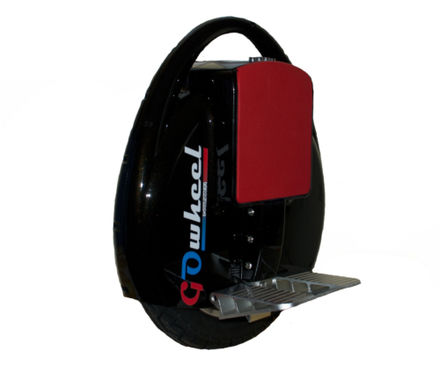
- Tricycles(from three and other Greek kýklos circle, wheel) - 3-wheeled vehicles- some bicycles, motorcycles (trikes), cars, etc.,
- ATVs(from Italian quattro four and other Greek. kýklos circle, wheel) - 4-wheeled vehicles. In the post-Soviet space, ATVs are most often understood as all-terrain vehicles, and in the USA - 4-wheeled bicycles. But by definition, they include any 4-wheeled vehicle, including most passenger cars.
Railway
Rail transport is a type of land transport in which the transportation of goods and passengers is carried out by wheeled vehicles along rail tracks. Railway tracks usually consist of iron rails mounted on sleepers and ballast, on which rolling stock, usually equipped with metal wheels, moves. Railroad rolling stock typically has less frictional resistance than automobiles, and passenger and freight cars can be coupled together to form longer trains. Trains are powered by locomotives. Rail transport is relatively in a safe way transport.
Metro Light Rail
A type of light rail transport is high-speed trams, including underground trams and urban railways). At the same time, the differences between such light rail systems from the metro and city railways (S-Bahn) are unclear, which often causes terminological errors. In general, this term is usually used to refer to high-speed electrified railway systems(for example, trams), isolated from other traffic flows throughout most of the network, but allowing single-level intersections and even street traffic (including tram-pedestrian zones) within the system. Unlike light rail, which is closer to a regular subway, light rail is closer to trams.
Overpass transport
Automotive
Passenger cars are the most wasteful transport compared to other modes of transport in terms of the costs required to move one passenger.
Road transport requires good roads. Now in developed countries there is a network of highways - multi-lane roads without intersections, allowing speeds of over one hundred kilometers per hour.
- Vehicles: various types of cars - cars, buses, trolleybuses, trucks;
- Communication routes: car roads, bridges, tunnels, overpasses, overpasses;
- Signaling and control: traffic rules, traffic lights, road signs, motor vehicle inspections;
- Transport hubs: bus stations, bus stations, parking lots, intersections;
- Energy supply: automobile gas stations , contact network ;
- Technical support: vehicle service station (STS), parks (bus, trolleybus), road services
By purpose
According to their purpose, cars are divided into transport, special And racing. Transport vehicles are used to transport goods and passengers. Special vehicles have permanently mounted equipment or installations and are used for various purposes (firefighting and utility vehicles, auto benches, truck cranes, etc.). Racing cars are intended for sports competitions, including setting speed records (record racing cars). Transport vehicles, in turn, are divided into cars, trucks And buses. Trolleybus- bus with electric drive. Passenger cars have a capacity from 2 to 8 people.
Trucks Today they transport almost all types of cargo, but even over long distances (up to 5 thousand or more thousand km) road trains (truck-tractor and trailer or semi-trailer) successfully compete with the railway when transporting valuable cargo for which delivery speed is critical, for example, perishable goods products.
Cars(personal use cars) - the vast majority of currently existing cars. They are usually used for trips over distances of up to two hundred kilometers.
Public road transport For operation in cities and suburbs, mainly low-floor city buses are now used, and for intercity and international scheduled and tourist transportation, intercity and tourist liners are used. The latter differ from urban models in their layout with a raised floor level (for placement under it luggage compartments), a comfortable interior with only seats, the presence of additional amenities (kitchen, wardrobe, toilet). Due to increased comfort tourist buses at the end of the 20th century, they quite successfully compete with railways in the field of transporting tourists.
Bicycle
Bicycle (from Latin velox - fast and pes - leg) - two- or (less often) three-wheeled ( four-wheeled [ ]) a machine for movement, driven by 2 pedals via a chain, belt or other [
Where did it all start? Initially, man walked on the earth independently and carried various loads. They were of different sizes and weights, so sometimes it was hard for a person. And he couldn’t move some loads at all. Then domestic animals - donkeys, horses, and in some countries - elephants came to the aid of man; they began to transport goods, and man had the opportunity to travel longer distances.


After some time, man invented a boat and a sail. Then the man learned to move on water, and the wind helped him in this. A little later people They have already begun to build ships and sail along rivers, seas and even oceans and discover new lands.

Human needs grew, loads became larger and heavier, and they had to be moved over longer distances. Animals could no longer help humans. It was then that vehicles had to be invented. The first thing man invented was balloon. It could move a fairly large load over long distances, but, unfortunately, it was not very convenient, because the ball flew only in the direction where the wind was pushing it.

Then, after some time, man invented the engine - the heart of any machine. The first engines were steam engines, that is, they ran on coal and wood. Nevertheless, such an engine allowed man to invent a steam locomotive and successfully use this means of transportation for a long time.
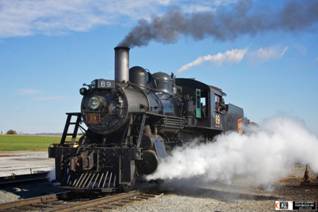
The steam locomotive was very convenient because it could transport people and goods over long distances. And yet, the locomotive also had its drawbacks - it could only move on rails, for this they first had to be laid, and this was not always possible. The solution was obvious - remove the rails and leave only the wheels. This is how the first car appeared.
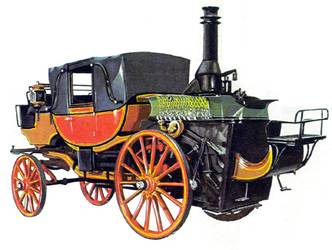
Since then, modes of transport have been constantly improved, and over time, underground transport (metro), missiles, and submarines appeared.
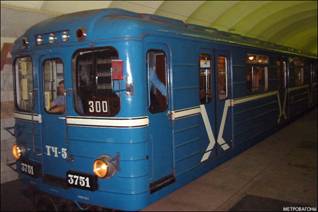
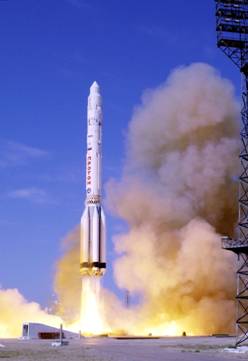

So, today we mentioned the following types of transport:
1. Ground (moves on the ground).
2. Aquatic (moves on or under water).
3. Aerial (moves through the air).
4. Underground (moves underground).
All types of transport are necessary and important for people. Transport can also be divided according to its purpose into the following groups:
1. Freight.
2. Passenger.
3. Special.
Freight transport transports various goods, passenger transport delivers passengers to their destination, and why do we need special transport?
It happens that a person gets into trouble and needs help, medical or rescue, and then the person turns to special people who can help him in this trouble. These people need to get to the scene of the incident as quickly as possible in order to help the person in his trouble. In such cases, these people travel by special transport.
Special vehicles include fire trucks, ambulances, and police cars.
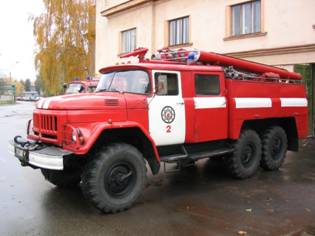
Rice. 15. Fire truck ()
Transport - (from Latin transporto - I move), is a set of means and communication routes whose activity ensures all the activities of people. Communication routes are roads. Technical facilities - gas stations, communications equipment, workshops. Transport is the most important strategic resource. There are land, water and air transport. Land types: rail, road and pipeline; water - sea and river; air - aviation. A tenth of people work in transport.
The transport system is a set of all types of transport connected technologically, technically, economically and by regulatory legal acts.
Main types of transport, their brief characteristics
Railway transport in many industrialized countries it occupies one of the leading places among other modes of transport. This is explained by its versatility - the ability to serve manufacturing sectors of the economy and meet the transportation needs of the population regardless of the weather: in all climatic conditions and at any time of the year.
Having modern types of locomotives and cars, a powerful rail track, using modern means of automation, telemechanics and computer technology, railway transport, along with other branches of industrial production, is included in the economic potential of each country.
During its existence, the length of the world's railways has reached almost 1.3 million km; At the same time, they have no equal in terms of carrying capacity and continuity of operation.
1825 - First railway in England
Automobile transport provides:
1) relatively high speed of movement;
2) delivery of goods to areas where there are no other modes of transport.
It is the most convenient, as it allows cargo to be delivered directly from the sender to the recipient without overloading; effective for intracity and intercity passenger transportation. At the same time, the cost of freight and passenger transportation by road is higher compared to other types. There are 31 million km of roads in the world, and 1 million km of roads in Russia.
Sea transport provides mass transportation to foreign countries, as well as between ports within the country located on the sea coast. Sea transportation is most effective in areas where sea routes shorter than land routes, and where there are no other types of mass transport. For Russia, the importance of maritime transport in service is especially great northern regions Siberia and Far East where there are no railways. The cost of sea freight transportation is lower than other modes of transport, and especially for long-distance transportation.
River transport carries out local and long-distance transportation on routes that coincide with the location of navigable rivers and canals. It has a high carrying capacity, especially when using heavy-duty vessels on deep-water rivers, as well as on river-sea routes. Cost price river transportation lower than other modes of transport. However, a significant disadvantage of Russian river transport is the short duration of navigation throughout the year and low speeds.
Air Transport– the highest speed mode of transport, through which mainly passenger transportation is carried out over short and long distances. The share of freight traffic is low. The operation of air transport is greatly influenced by weather conditions. The cost of air transport is significantly higher than other modes of transport.
Pipeline transport It is used mainly for transporting oil, petroleum products and natural gas and is almost independent of weather conditions, capable of transporting liquid and gaseous products over very long distances, and is a relatively cheap mode of transport. In Russia = 15,000 km
Industrial transport carries out the movement of objects and products of labor in the sphere of production.
Trunk public transport includes rail, road, sea, river, air and pipeline.
Urban transport provides transportation within the city and includes the metro, trolleybus, tram, bus, taxi, truck, etc.
Basic elements of transport systems
A unified transport system ensures the coordinated development and operation of all types of transport in order to maximally satisfy transport needs at minimal costs. The transport process is a set of means and communication routes, as well as various technical devices and structures that ensure their normal operation. Its components: means of communication, communication routes, technical devices and structures in transport (repair plants, gas stations, services); reserves - carrying capacity and throughput routes. The subject of transport impact is cargo or passengers. Means of influence - rolling stock. The object of influence is economic. Or an administrator.
Economic, governmental, social, cultural and military significance of transport
Economic- is to ensure the development, communication and coordination of all sectors of the economy.
State- lies in the fact that transport connects individual regions of the state.
Social- providing work to the population, facilitating labor and increasing its productivity.
Cultural- consists in the possibility of disseminating aesthetic values with its help, which increases the culture and education of the population.
Military- ensures the transportation of troops and military equipment, as well as the supply of troops with everything necessary. Conducting the front is now impossible without transport.
Place of Russian transport in the global economy
Transport accounts for 12% of the world's GDP. Railway volume 31%
River transport takes up 2% Sea transport takes up 4% Air transport takes up less than 1% Pipeline takes up 8% Railway transport takes up about 3% of passengers. Road transport carries passengers more than 50% Air transport more than 11% Taxi 11% Trolleybuses more than 30%
Chronology of the development of transport in the prehistoric period
Transport appeared approximately 6,000 years ago. Rollers for particularly heavy loads, hollowed out tree trunks or rafts. The wheel was an important and big step in human history, appearing around 3000 BC. They used packs or 2- to 4-wheeled carts. Sails, tubular wheels approximately 1500 BC. Invention of the compass.
Development of transport from 1st to 17th century
In 1662, Obnibus carts appeared in Paris to transport passengers. Vans - for transporting goods.
800: The streets of Baghdad began to be covered with tar.
875: First attempt at controlled flight by Abbas ibn Firnas.
1633: Lagari Hasan Celebi makes the first attempt at controlled flight on a rocket.
1662: Blaise Pascal introduces a horse-drawn public bus, which has a regular route, timetable and fare system.
Development of transport in 18-19 in 1700
In 1791, a scooter was designed. In 1817, Karl Dreys built a 2-wheeled carriage (trolley).
Steam engines became a big impetus for development. The hot air balloon was invented in France. 1825 - The railway and railway bridge were built in England. In Russia in 1839, from St. Petersburg to Tsarskoe Selo was 27 km. In 1851, a railway was opened from Moscow to St. Petersburg. 1896 - first flying model aircraft. The first three-wheeled car was created in France. 1877 - the first icebreaker was created (Russia).
Development of transport in the 20th century and now
1901 - Ford started producing cars. 1905 - first gas station. 1914 - first airline in the USA 1933 - White Sea Baltic Canal. 1941- Turbo jet (England) 1947- first supersonic aircraft. 1968-TU 144 supersonic aircraft.
Unity concept transport system, its development
Main ideas: 1) Development of the concept of unity of the transport system. 2) Principles of management in a market economy. The transport system is most often considered as an integral sector of the national economy, which includes 4 elements:
1 transport network of all types of public and non-public transport.
2 mobile vehicles (regardless of their form of ownership),
3 transport labor resources
4 management system for all types of transport at the federal, regional and municipal levels.
Transport management system in the Russian Federation and its prospects
The need for strict implementation of tasks related to transport safety.
Single-origin transport connection
Close relationship between transportation processes
Implementation of tariff policy
Conducting a comprehensive analysis of the transport system
Characteristics of indicators of transport provision and accessibility
Indicators of transport provision and accessibility
These indicators reflect the level of transport services for the economy and population
and depend on many factors:
Network length;
Throughput and carrying capacity;
Street configurations;
Parallelism of moves;
Rain, ice, etc.;
The higher the indicator, the more developed the network.
1) Network density per 1000 km2
Lе – length of operational length; S – area of the territory.
2) Transport provision of the population per 10,000 people
N – population number.
3) Generalized indicator (Engel formula)
4) Uspensky introduced the formula: the volume of goods presented for transportation
Q – quantity of cargo.
5) With development various types transport there was an indicator for bringing
them to a general view
S0 – inhabited territory
Vasilevsky proposed the following coefficient for bringing the transport line to
one km of railways (throughput and carrying capacity)
For highways - 0.45
Regular highway - 0.15
River route - 0.25
Main gas pipeline - 0.30
Oil pipeline - 1
Indicators by railway transport dszh/d:
World as a whole - 1.81
CIS - 0.65
USA - 2.27
Asia - 1.35
Russia - 0.51
Africa - 0.50
Macroeconomic indicator of the level of transport
services consider the volume of reduced freight turnover in ton-kilometers, (
freight turnover - the number of tons per kilometer) of
per 1 ruble of national income.
Volume indicators of transport work
The volume of transportation is the planned or actually completed volume of transportation per unit of time.
Freight turnover is the volume carried over a certain distance.
The average transportation distance is freight or passenger turnover divided by tons.
Labor productivity is the volume of transport work divided by one person.
Labor intensity is an indicator of the inverse volume of labor.
Transportation of goods in tons (t);
Freight turnover in ton-kilometers (tkm);
Transportation of passengers (persons);
Passenger turnover in passenger-kilometers (pass.-km).
Key performance indicators
Time, speed of cargo delivery and the degree of their safety are the most important indicators of the quality of transport products, which have a direct impact on the quality and efficiency of transport services in production.
Time and speed of delivery of goods and passengers
As a rule, in market relations a reasonable compromise is required between cost and urgency of delivery. Delivery times are related, first of all, to the technical or estimated speed at which a given transport is oriented. Delivery time depends on the type of message, transport technology, design features of vehicles, conditions of the transport process, including climatic and many other factors. The delivery time is based on the average speed of movement and includes time for the delivery and removal of cargo, loading and unloading operations, paperwork, stops along the way for various reasons, etc.
The cargo delivery time is the time from dispatch of the cargo by the cargo owner (sender) to its receipt by the consignee.
Passenger delivery time is the time from leaving the place of departure (home, work) until arriving at the destination.
If we take the speed of a conventional train to be railway at a distance of 600 - 700 km for 100%, then the speed of a route train will be 130 - 140%, of vessels on river transport - 60 - 70%, by air - depending on the distance 150 - 300%, in intercity road transport - 180%, and on pipeline - 40-50%.
Average speeds on railway transport are 55 km/h; the local speed of a freight train is approximately 33 - 35 km/h, with a steam locomotive moving at a speed of 15 - 20 km/h, an electric locomotive 40-50 km/h, a diesel locomotive - 25 - 30 km/h. An intercity bus has a speed of 40 - 50 km/h, an express bus has a speed of 70 - 80 km/h; river-sea vessels - 26 km/h, and hydrofoil vessels - 65 - 75 km/h; aviation on local lines -300 - 400 km/h, on long-distance lines - 850 - 950 km/h and more.
Approximate delivery speeds by mode of transport are as follows: by rail - 10-11 km/h (average mileage 260 - 270 km/day, and by route trains - 350-370 km/day); on road transport- 15-17 km/h, and for intercity traffic it is 2 - 3 times higher (500 - 800 km/day); on river transport - 5 - 6 km/h (280 - 300 km/day); on maritime transport-16- 17 km/h, and by tankers - 19 km/h (350 - 550 km/day); by air transport - 450 km/h; on pipeline transport -70 - 80 km/day. Sea transport in coastal shipping delivers cargo faster than rail transport. Pumping oil extends the delivery time by 2 - 3 times compared to delivering oil by rail. Transportation of goods in small quantities on all types of transport takes place at a reduced delivery speed, which is due to the need to accumulate them. Losses from insufficient speed of cargo delivery by rail are currently estimated at 20 - 25 billion rubles. in year.
The situation is somewhat different with passenger delivery speeds. This speed must be calculated taking into account the time and convenience of access to mainline transport. The speed of transporting passengers on any type of transport is higher than when transporting goods. In passenger transport, there are regular and high-speed routes, as well as cargo-passenger routes, the cost of which varies; it depends on the number and duration of stops along the route. Delivery speed, taking into account cost, determines the competitiveness of an enterprise in passenger transportation.
In any situation, you need to not just focus on the average delivery time, but calculate the specific delivery time of a passenger or a given cargo along a given route, taking into account the convenience (interest) of the passenger or the requirements of the cargo owner.
A Brief History of Vehicles Using Human and Animal Power
Cart - a vehicle designed to move cargo or passengers on a hard surface using the muscle power of animals or humans; the living being driving the cart is located outside it.
Freight carts
A cart is a four-wheeled carriage (In the Soviet Union there were twelve teleworks factories. The largest of them was the Smena plant in Borovichi. In the 1980s, it produced up to two thousand carts per month, which were supplied to all corners of the USSR.)
Arba - two-wheeled cart
A wagon is a large cart, a military vehicle. (Until the second half of the 20th century, a wagon was a large, long cart drawn by horses or oxen)
A wheelbarrow is a single-axle and therefore easily controlled vehicle for moving goods by muscular force (The wheelbarrow was invented in ancient Greece. Two lists from 408-407 and 407-406 BC mention “1 box for a one-wheeled vehicle (hyperteria monokyklou)” )
War wagons
Chariot (they appeared around 2600 BC)
Four-wheeled war wagons of a unique design were used by the Hittites and Hussites.
Tachanka - used during the Russian Civil War (the name of a horse-drawn, spring-loaded cart with an easel (mostly) rear-facing machine gun. Known since the early 1890s.)
Specialized carts
Field kitchen (The first field kitchens appeared in the Russian army in 1898.)
Mobile Church (The first Orthodox mobile (camping-ulus) church in the name of the Resurrection of Christ was built in 1724 for the grandson of the Kalmyk khan Ayuki Khan Baksaday-Dorji (Peter Taishin) who converted to the Orthodox faith)
On skids
Carts on runners are usually called sleighs. Most known types sleds in Russia:
A cart is a carriage on runners.
A sledge is an open cart on runners that widens at the rear.
Drovni - cargo sleds without a body.
Passenger carriages
A carriage is a covered carriage on springs. (The first horse-drawn carriages found in Celtic burials indicate that the body was suspended by straps. Four-wheeled carriages were also used in prehistoric Europe and their classic wheel and spring suspension design has been used since time immemorial .)
Stagecoach is a large multi-seat passenger or mail carriage, widely used in the 19th century. (Mail stagecoaches became most widespread at the end of the 18th - early XIX century. The average route speed of postal stagecoaches was 9-10 km/h.)
Mechanical vehicles
In the understanding of modern people, the word “car” means a vehicle that is equipped with an autonomous engine (this can be an internal combustion engine, an electric or even a steam boiler). A couple of centuries ago, all “self-propelled carriages” were called a car.
People used mechanical means of transportation long before the invention of the automobile. They tried to use both human muscles and free resources as a driving force. For example, in ancient China there were land carts with sails that were driven by the power of the wind. Such an innovation came to Europe only in the 1600s, thanks to the designer Simon Stevin.
The Nuremberg watchmaker I. Hauch built a mechanical carriage, the source of movement of which was a large clock spring. One winding of such a spring was enough for 45 minutes of driving. This cart really moved, but there were skeptics who claimed that two people were hidden inside it, setting it in motion. But, despite this, it was still bought by King Charles of Sweden, who used it for trips around the royal park.
According to a book published in Paris in 1793, the author of which was Ozanam, for several years a carriage had been driving through the streets of Paris, driven by a footman who pressed on the footrests located under the body.
In Russia (18th century), two designs of mechanical carriages were invented: the self-running stroller by L.L. Shamshurenkov (1752) and the scooter by I.P. Kulibin (1791). A detailed description of the self-running carriage has not been preserved, but it is known that its tests were successfully carried out on November 2, 1752. According to the invention of I.P. Kulibin has preserved much more information: it was a three-wheeled pedal stroller with a flywheel and a three-speed gearbox. Idling of the pedals was carried out due to a ratchet mechanism installed between the pedals and the flywheel. The driving wheels were considered to be the two rear ones, and the steering wheels were the front wheels. The weight of the stroller (including the servant and passengers) was 500 kg, and its speed was up to 10 km/h.
Later, Russian inventor E.I. Artamonov (a serf mechanic at the Nizhny Tagil plant) built the first two-wheeled metal bicycle in 1801.
The era of steam cars
Ferdinand Verbst built the first steam-powered automobile around 1672 as a toy for the Chinese Emperor.
The car was small in size and could not carry a driver or passenger, but it may have been the first working steam-powered vehicle ("car"). In 1680, Isaac Newton, in one of his works on mechanics, described a carriage that was supposed to move due to the reactive force of steam. The crew consisted of a cart equipped with a steam boiler with a nozzle through which, using a valve, the driver could release steam, thereby accelerating the cart. Of course, this was just a project, and it is unknown whether it was ever realized. First used in production steam engine was a "fire installation" designed by the English military engineer Thomas Savery in 1698. Then the English blacksmith Thomas Newcomen demonstrated his “atmospheric engine” in 1712. It was an improved Severi steam engine, in which Newcomen significantly reduced the operating steam pressure. Newcomen's attempts to use the reciprocating motion of a piston to rotate a paddle wheel on ships were unsuccessful. However, Newcomen's merit is that he was one of the first to realize the idea of using steam to produce mechanical work. Newcomen's steam engines became widespread: by 1735 there were more than a hundred of them in England alone.
In 1769, the French inventor Cugnot tested the first example of a full-size steam-powered machine (Newcomen's improved machine), known as the "little Cugnot cart", and in 1770 - the "great Cugnot cart". The inventor himself called it the “Fire Cart” - it was intended for towing artillery pieces. The “Cugno Trolley” is considered the predecessor of not only the automobile, but also the steam locomotive, since it was driven by steam power. Cugnot's steam cart (fardier à vapeur de Cugnot) had a drive to a single front wheel. However, apparently, its handling was unimportant, which was the cause of the world's first car accident: during testing, the inventor lost control.
In 1791, the Russian inventor Ivan Kulibin made a “scooter cart”. Ivan Kulibin began work on a carriage with a steam engine and pedals in the 1780s. Its features include the flywheel, brake, gearbox and bearing that make up any modern car. Its design had three wheels. Unfortunately, as with many of his other inventions, the government did not see the potential of these developments and they were not further developed.
The first automobile patent in the United States was granted to Oliver Evans. in 1789. Evans was demonstrating his first successful self-propelled vehicle, which was not only the first automobile in the United States, but also the first amphibious vehicle, as it was capable of traveling on wheels on land.
In the 19th century, steam-powered stagecoaches and routieres (steam tractors, that is, trackless steam locomotives) for ordinary roads were built in England, France and used in a number of European countries, including Russia, but they were heavy, voracious and inconvenient, so they were not widely used . Other works include a liquid fuel steam engine, assembled in 1815 by Josef Bozek, a professor at the Prague Polytechnic. and a four-seater steam phaeton made in 1813 by Walter Hancock, designer and operator of London's steam buses.
In 1900, approximately half of the cars in the United States were steam powered. Steam, electric, and gasoline cars competed for decades until gasoline internal combustion engines became dominant in the 1910s.
Soviet projects:
in 1948, an experimental NAMI-012 was built on the chassis of the seven-ton YaAZ-200 (later MAZ-200). The characteristics of the three-cylinder steam engine were quite familiar: power - 100 hp, speed - up to 1250 per minute. And the dimensions and weight were even smaller than those of a diesel engine with a gearbox. True, this saving was negated by the heavy (about a ton) “boiler unit”.
History of electric cars
In 1828, Hungarian Jedlik Anyos, who had invented an early type of electric motor, created a miniature model of a car powered by his new engine. In 1834, the inventor of the first electric direct current motor, Vermont blacksmith Thomas Davenport, installed his motor in a small model of a machine that he operated on a circular electrified track. In 1835, the Dutch professor of the city of Groningen, Sybrandus Stratin, and his assistant Christopher Becker created a small electric machine driven by non-rechargeable primary galvanic cells. In 1838, Scotsman Robert Davidson ( English) developed an electric locomotive that reached speeds of 6 km/h (4 mph). A patent was granted in England in 1840 for the use of rail tracks as a conductor of electric current, and similar American patents were issued in 1847 to Lilley and Colten. Sometime between 1832 and 1839 (exact year unknown), Scottish citizen English. Robert Anderson invented the first crude electric carriage driven by non-rechargeable primary galvanic cells
The first cars with an internal combustion engine
Early attempts to manufacture and use internal combustion engines were hampered by the lack of suitable fuel, especially liquid fuel, and early engines used a gas mixture.
Early experiments using gases were carried out by Swiss engineer Francois Isaac de Rivas. (1806), who built an internal combustion engine running on a hydrogen-oxygen mixture, and the Englishman Samuel Brown (English) Russian. (1826), who experimented with his own hydrogen fuel engine as a means of transport to Shooters Hill, south-east London. Hippomobile (English)Russian Belgian Etienne Lenort with a single-cylinder internal combustion engine running on hydrogen fuel made a test run from Paris to Joinville-Le-Pont (English) Russian. in 1860 covering about nine kilometers in about three hours. The later version ran on coal gas. Delamar-Debouteville (English) Russian. the car was patented and tested in 1884.



